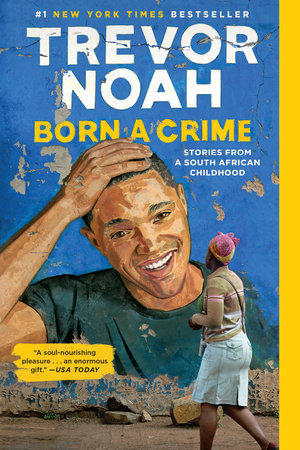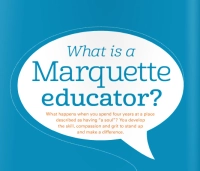By Dr. Melissa Gibson
It is in fact nothing short of a miracle that the modern methods of instruction have not yet entirely strangled the holy curiosity of inquiry; for this delicate little plant, aside from stimulation, stands mainly in need of freedom; without this it goes to wrack and ruin without fail.
Albert Einstein
What do you notice when you walk outside in the morning?
Me, I notice how the light is dappled differently through the east-facing trees in September than it is in July. I notice the smell of toasting bread from the corner bakery. I notice that some mornings the grass is heavy with dew. I notice the remnants of a car window smashed into the street. I notice an older woman rushing to the #60 bus and my neighbor languidly walking his dog with coffee in hand. Even in my own frantic race out of the house, I notice. And that noticing usually turns into wondering—sometimes on task (“What exactly is the dew point, again?” and “I wonder whose car got broken into?”), sometimes not (“Why is adult life just one big rush to get everywhere and still always end up late?”).
This is just the fabric of my mind’s life: noticing and wondering, wondering and noticing. In other words, I take for granted that I am curious and that curiosity drives my experience of the world.
Curiosity is a basic prerequisite for meaningful learning. We can, of course, memorize facts and practice skills without curiosity; we can get good grades and jump through academic hoops without curiosity. But meaningful learning, the kind that lights our souls on fire and can project us into states of flow, requires something more than external motivation. It requires curiosity.
It’s a stale lament—and often a deeply oppressive one—that students lack curiosity. We teachers wonder what happened to turn our students from the curious little beings who asked so many “why” questions that we wanted to scream to the stony-faced, half-sleeping, resistant teens before us, but the answer is at least partly simple: School happened. The skill-and-drill of the standardized testing regime, the age-old banking of disembodied content, the grading of right and wrong answers, the sitting in desks with few opportunities to explore, the monotony of a teacher’s droning voice.
School happened.
What heartbreaking knowledge—both as a teacher who might perpetuate this mind-numbing system and as a human who has spent the majority of their life inside schools, fighting to hold onto a flourishing life of the mind. Layer in the exclusion and oppression that students of color, queer students, low-income students, neurodivergent students, and recently immigrated students face and one wonders how we don’t have a youth rebellion on our hands.
Except we do. It’s called disengagement.
There are 24 students in the weekly local history workshop that I am facilitating. 24 students who, for one reason or another, need to make up a high school social studies credit after disengaging. My charge for the thirteen weeks is to spark their curiosity about our city and the stories we tell about it. I have a whole host of instructional tools I’ll use—local history media, field experiences, oral history gathering, guest speakers, participatory mapping, food stories—but none of that means anything unless we cultivate curiosity.
Here I am, on a bright Wednesday afternoon, our second together, checking students into their Covid seating arrangement before we head out on a neighborhood walk. Today’s objective is simply to notice the world around us. We are going to walk, cameras in hand, and observe the neighborhood. We are going to capture images of things that speak to us, whether because they are interesting or curious or funny or beautiful or for no reason we can articulate. We are going to notice and photograph, wonder and walk. And we’re going to call that history class.
Now, in the week prior and the week since, I have had to talk my trained-social-studies-teacher-self back from the ledge. What is this nonsense I’m doing? This isn’t social studies. What about the content and the standards and the democratic and discursive skills and…? Here I stop and remind myself: I am cultivating curiosity. Because before we can get to any of that, we have to be curious about the world we live in. We have to start noticing what this world is, and then start wondering: Why is it like this? How did it come to be? What else could it be like? Do I like it? Why or why not? What am I not seeing in the world around me? How does this world make me feel? What might those feelings be trying to tell me? If I want the “official” learning to be anything more than useless information (which they could access via Google anyways, so what would even be the point of that??), we need to be curious. We need to notice and wonder and, then, think and learn.
How do you accomplish that in two hours, once a week, with a group of reluctant social studies students? We started with a tree.
What is this? I asked the students while holding up a slice of tree trunk. What do the lines tell us? They of course knew: the rings tell us about the tree’s age. Yes, but when you’re walking down the street, what do you see? You might notice the tree is large and therefore probably old, but you don’t know how old; you don’t know when it grew slowly and when it grew quickly; you can’t see the scars of drought and flooding and fire. When we walk down the street, we see the bark of trees. We can stop there. Or, we can wonder: what stories does this tree have to tell us? What would I see if I could peel back this bark?
Of course, I’m not only talking about trees. And so I let Clint Smith help me out here. In his new book, How the Word Is Passed, he explores how slavery is memorialized or forgotten at a variety of historical sites in North America and Senegal. In a recent NPR piece, he tells a bit of the story of Angola Prison, the largest maximum-security prison in the US. Angola is built on top of a former Louisiana plantation; today, incarcerated men—mostly Black—still work cotton fields under the rifles of overseers. That alone is a horrific layering. But in this interview, Smith talks about visiting the Angola gift shop (WTF, I know), where there are mugs for sale that say, “Angola. A gated community,” and where you can buy a twenty-foot poster of a white overseer watching out over a field of incarcerated Black men who are picking cotton. The image is in black-and-white, so you have to do a hard look to determine whether it is pre- or post-1863. And then you can go tour the barracks, take your picture on death row, and watch the men farming from your bus as you leave the Angola grounds. Smith asks in his book and in this interview, “How can such a place exist?”
My students are agape as they listen to the interview clip. I have, purposefully, chosen a horrific example of what we might see beneath the bark; it’s also an important example. What we take for granted as “just the way the world is” is often masking important perspective and history. How can we train ourselves to wonder how the world came to be this way—and then to care about the answer?
Next, we walk. Thirty minutes around East Town, a tony neighborhood near the lake and downtown, full of young professionals and college students. It’s the only neighborhood in Milwaukee served by the new, free Hop train. It is the neighborhood my students visit for school, but it is not their neighborhood. Their task is to document what they see in photos. They can do this free form, or they can participate in a photo scavenger hunt. What’s important is that they are noticing.
When we left for the walk, we were 150 minutes into knowing one another. They were polite but skeptical; they didn’t say much to me. When they came back thirty minutes later, they were new students. Their masks were off, so I could see their smiles. They were laughing as they ran towards school from all different directions. They traded phones to look at one another’s photos. They talked to me: Janel telling me about the church on the corner and how her grandma used to go there; Luz confessing she was scared to walk around the neighborhood without an adult. Mel and Shakira were on tiptoes watching the dance class practice percussion. Karen’s group showed us their video of Lake Michigan; Ashanti’s group laughed hysterically when we noticed they were all holding Panera cups; even Asia, who had not yet uttered a word in my presence, was talking with her classmates. The students were buzzing.
It was, of course, sunny. And it was, of course, warm. It was definitely Not School, and it was definitely novel to go strolling around the neighborhood with relative freedom. But when we returned to the classroom, the energy persisted. Without my prompting, the students whipped out their laptops and started organizing and sharing photos. Linda looked at me hungrily and said, “What’s next?” They dove into the storytelling task (“Tell a story about the neighborhood in three pictures”) and begged for more time than we had. When the bell rang, they were still working; we hurried through announcements and next steps while they gathered belongings and before they bolted.
Luz stopped at the door on her way out. “This was really fun,” she said, and then nodded goodbye.
Someone looking at how we spent those 120 minutes could argue that we didn’t do anything. There was no content covered. There was no writing practice. There wasn’t a clear disciplinary connection. To an outsider, this might look like a high school version of playtime. And it was. Because in that playtime, something important happened: They noticed; they wondered. They laughed and explored. They were curious, and they left class hungry for more.
…
Dr. Gibson has given permission to have her reflections about this ongoing work with Dr. Doerr-Stevens and the students at St. Joan Antida shared from her blog The Present Tense through the Marquette Educator. Each week, we will share a post from Dr. Gibson about this ongoing journey. Please check back to read more about this exciting partnership and transformative learning process.



























